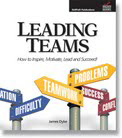I’ve written about failure and mistakes before. (I’m happy to do so—to provide helpful concepts and tools that will help ANY LEADER address and manage failure effectively and professionally!)
Recent events in Afghanistan have prompted me to revisit this important subject…and revisit my thoughts on the subject based on a similar debacle years ago that occurred during another presidential administration.
In the current context, I’m speaking of the jaw-dropping chaotic and disastrous withdrawal of American forces from Afghanistan—a failure of such epic proportions that experts now agree it has inflicted immeasurable damage to American foreign interests…and will be incalculably difficult to repair.
It’s hard to believe that a failure of this nature is NOT unique…but…
You may not remember a few years ago during the Obama administration, when the U.S. embassy in Benghazi was attacked by a well-armed group of Islamic insurgents. They quickly overcame the small handful of American guards present, killing them AND the official they were protecting—Ambassador Christopher Stevens.
During many media appearances, Obama’s State Department officials (and many members of his cabinet and administration) explained it as the reaction to the circulation of an anti-Muslim video that ridiculed Islam, and ignited a “spontaneous protest,” with murderous violence… a situation that could not possibly have been anticipated by State Department officials!
BTW…That’s a well-used phrase that you hear from many perpetrators of failure:
Nobody could have seen this coming!

If it sounds familiar, it is! (In fact, YOU may have used it YOURSELF at one time, to explain YOUR failure!) It’s an easy go-to when you need to deflect blame and excuse yourself from any responsibility or accountability.
Of course, American voters and their representatives were skeptical of this explanation, many believing it was a weak attempt by the administration to distract from the real reasons for the disaster. People wanted to know exactly WHAT happened and HOW it happened.
So…
Congress did what it does best (or, perhaps, what it does worst!). It held hearings on the event.
A key moment in the congressional hearings on the tragedy received this heated response from President Obama’s Secretary of State at the time, Hillary Clinton, who reacted to questioning with frustration and anger. She said…
“We had four dead Americans. Was it because of a protest? … What difference, at this point, does it make? It is our job to figure out what happened.”
One might argue that it DOES make a difference, but her last statement is inarguable—it IS our job to figure out what happened. Frankly, that is EVERY leader’s job—to carefully, thoroughly, and objectively deconstruct failure to determine exactly what happened.
That same principle must be applied in this most recent Afghanistan disaster!
There are three potential sources of failure. I call them the Three S’s…
- Situation
- Systems
- Staff
SITUATION. This is the wild card in the equation. It is impossible to completely control circumstances. All we can do is try to imagine potential scenarios and plan for their contingencies. Sadly, it was apparent in the Benghazi tragedy that Ambassador Chris Stevens DID consider the potential for attacks on the consulate and cabled a request for additional security to address the vulnerability.
And in the case of Afghanistan, we are similarly learning that American State Department officials warned of the increasingly possible collapse of the Afghan army and the rapid advance of the Taliban forces. And yet… the American leaders responsible for devising a plan and a process for exiting Afghanistan pled their innocence with the oft-used excuse:
Nobody could have seen this coming!

SYSTEMS. Every organization creates procedures or protocols to address common needs, demands, work flow, situations, and scenarios. They range from mundane processes for issuing funds to protocols for responding to extreme emergencies of weather, violence, etc. Secretary Clinton confessed that she did not read Ambassador Steven’s cable, because “The State Department central office receives thousands of cables each week, all of them addressed to … the Secretary of State.”
I don’t think anyone is surprised that the Secretary of State doesn’t read every cable. We may wonder, however, if there was any SYSTEM or protocol in place to prioritize these communiqués to ensure that the most important and critical cables DID receive the Secretary’s attention.
The current Afghanistan failure begs the same question—what SYSTEMS were in place to identify accurate sources of information “on the ground”; receive and process intelligence; develop responses to various possible scenarios; calculating the resources and personnel needed to respond to these scenarios.
But processes do not work by themselves—they require PEOPLE to use them effectively.
STAFF. One might wonder who WAS reading the thousands of cables that arrived each week in the central office, and what kind of judgment they were exerting as a result. One might question the lack of discernment that failed to alert the Secretary of State to a dire warning and to a request for support where human life hung in the balance.
Of course, the same question requires the same clear analysis for the failure in Afghanistan: WHO played a key role in the systemic approach to leaving the country—WHO harvested the intelligence and analyzed it; WHO generated the strategies to deal with the impending challenges; WHO chose the final approach to deal with the situation; WHO continued to oversee the day-to-day collapse of the plan; and WHO was in a position to respond to contingency with agile flexibility.
Regardless of what happened in Benghazi or in Afghanistan, there are clear guidelines for responding appropriately to failure (of any kind) and assessing it thoroughly and objectively.
Here is what I teach managers:
1. Confront the failure directly and openly. Don’t beat around the bush. Identify key staff who have the information you need. Go to them and start finding out what happened.
2. Ask questions to draw out information. Take the initiative in seeking information and answers—don’t rely on the people involved to volunteer what they know (although some staff may be more than willing to be forthcoming). WHAT YOU DON’T WANT… is for “whistleblowers” to come forward with information that YOU should be determining and making public.
3. Sort truth from perception. Stay ruthlessly objective. Save your compassion for later. Your goal is to find out what REALLY happened. Keep in mind: YOU may be the ultimate source of the failure! Don’t let yourself off the hook at this point. You must be willing to accept your own responsibility, however painful that may be.
KNOW THIS: Rose-colored “spin” will only destroy your credibility. If you try to cover up your failure with fabricated misrepresentation, your leadership influence is OVER—it’s time to hand in your resignation and move on!
4. Clean up the mess. Take whatever measures are necessary to mitigate the impact of the failure.
5. Address the underlying reasons for the failure. Now make whatever changes are necessary to prevent future problems. Rethink your circumstances and risks. Redesign your processes. Revisit your staffing decisions.
6. Provide support – resources, training, coaching. Be prepared to help your people succeed by supplying whatever they require. That may mean additional resources (money, supplies, people), training, or coaching, or YOU championing those needs to colleagues and higher-ups. As previously alluded, this may also mean getting better staff in place! If you need to make changes in personnel, DO IT!! Let go of any incompetent staff immediately and start looking for more effective replacements!
REMEMBER: You’re only as good as your team!
Follow these simple steps next time YOU experience a failure, and you will be in a much better place as a result—sadder, perhaps, but ultimately much wiser!
Will we see any of these steps followed, as a result of the failure in Afghanistan? We can only hope! But one thing we have learned from history–the political arena rarely functions the same way our common sense would dictate. Sadly.
Until next time… Yours for better leaders and better organizations,
Dr. Jim Dyke – “The Boss Doctor” ™ helping you to BE a better boss and to HAVE a better boss!


